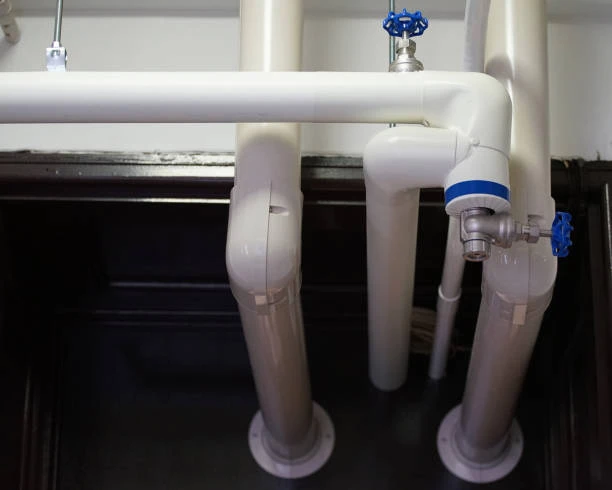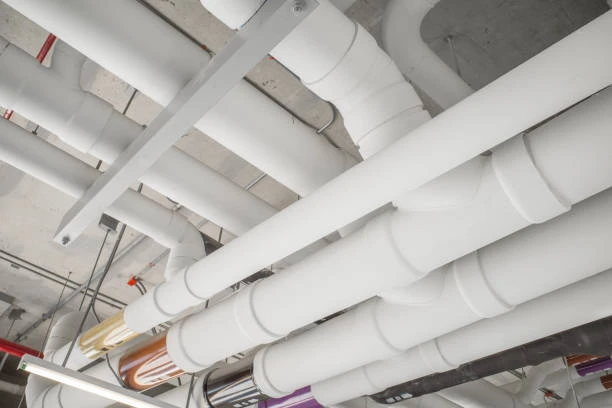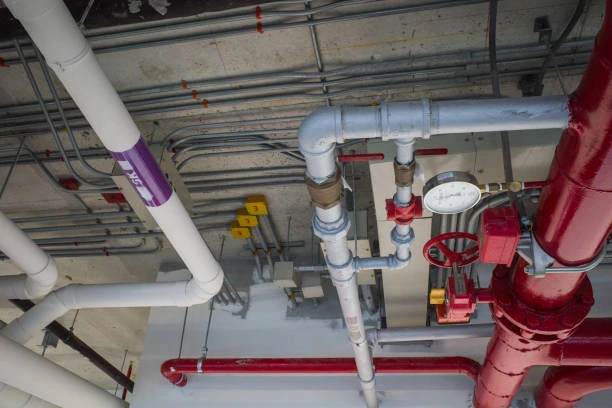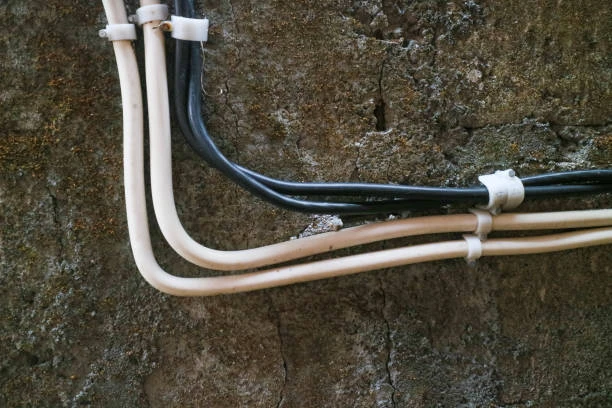Introduction: Copper Ball Valves and Their Role in System Automation
As automation becomes the standard across residential, commercial, and industrial sectors, the importance of reliable and adaptable flow control devices is growing. Copper ball valves, known for their durability and responsiveness, are at the heart of many automated systems. These valves help regulate water and gas flow efficiently, especially when integrated with actuators or smart controls. While options like valve plastic are widely used in low-pressure or cost-sensitive applications, copper ball valves remain the preferred choice in critical environments where performance, longevity, and heat resistance are non-negotiable.
This article explains how copper ball valves support automation, their core features, usage across industries, buying tips, and comparisons with plastic valves, helping you make informed decisions for your projects.
Frequently Asked Questions (FAQ)
1. What makes copper ball valves ideal for automation systems?
Copper ball valves offer high reliability, fast operation, and compatibility with electric actuators—making them suitable for precise, remote-controlled systems.
2. Are copper ball valves more durable than valve plastic options?
Yes. Copper and brass valves generally offer better strength, longer life, and higher temperature resistance compared to most plastic alternatives.
3. Can copper ball valves be used in both water and gas applications?
Absolutely. Their versatility allows them to control a range of fluids, including hot and cold water, steam, gas, and compressed air.
4. How do I know if a valve is compatible with automation?
Look for valves with actuator-ready mounting platforms (ISO 5211 or similar) or models that come pre-equipped with electric or pneumatic actuators.
5. Are copper ball valves suitable for home automation?
Yes. They are commonly used in smart home systems for controlling water supply, heating zones, and irrigation.
Understanding Copper Ball Valves: Definition and Key Features
A copper ball valve is a quarter-turn valve that uses a spherical disc to control the flow of fluid through a pipe. It is typically made from copper or brass and may be manually operated or fitted with an actuator for remote or automated control.
Key Characteristics:
Quick shut-off capability with a 90-degree turn.
High-pressure and temperature tolerance, suitable for demanding systems.
Corrosion resistance, ideal for both indoor and outdoor environments.
Minimal flow resistance, ensuring efficient operation.
Actuator compatibility, making them automation-ready.
These features make copper ball valves highly dependable in automated setups, where consistent operation and long-term performance are essential.
Common Applications and Industries
Copper ball valves are used across many sectors where automation and reliability are crucial. Their ability to integrate with smart controls enhances efficiency, safety, and responsiveness.
Application Areas:
Building Automation Systems
Used in smart plumbing, HVAC, and water supply regulation.Industrial Automation
Controls water, steam, and chemicals in manufacturing or process plants.Agricultural Irrigation
Enables automated water flow based on schedules or soil sensors.Renewable Energy Systems
Applied in solar thermal heating and biomass systems for fluid control.Smart Homes
Incorporated into intelligent heating and leak-detection systems.
While valve plastic options are popular in low-cost or temporary setups, copper valves remain the first choice where reliability and precise control are essential.
How to Select the Right Copper Ball Valve for Automation
When choosing a copper ball valve for automation systems, several factors should be carefully considered to ensure proper function and long-term value.
1. Material Quality
Choose valves made from solid brass or DZR (Dezincification Resistant) brass for high corrosion resistance. Avoid low-grade alloys that may weaken over time.
2. Connection Type
Options include threaded, soldered, or press-fit connections. Match these with your piping system for a secure fit.
3. Actuator Mounting
Ensure the valve has an ISO 5211 pad or similar interface that matches your actuator. Some models are sold with pre-installed actuators for convenience.
4. Operating Conditions
Check temperature and pressure ratings. Copper valves are suitable for hot water, steam, and even chemical media when correctly specified.
5. Certifications
Look for compliance with ISO, ASTM, or EN standards to guarantee the valve meets international quality benchmarks.
By choosing the right valve based on these factors, you ensure seamless integration into your automation system with fewer maintenance needs.
Installation Considerations for Copper Ball Valves
Installing copper ball valves in automation systems requires attention to both mechanical and electronic components.
Best Practices:
Use thread seal tape or approved sealants to ensure leak-free connections.
Support actuators properly to prevent strain on the valve stem.
Position valves accessibly for maintenance and testing.
Test actuator movement before full commissioning.
Avoid moisture exposure to electric components unless they are IP-rated for water resistance.
A well-executed installation ensures the system runs smoothly and avoids costly downtime.
Comparison: Copper Ball Valves vs Plastic Valves
| Feature | Copper Ball Valve | Valve Plastic (e.g., PVC, CPVC) |
|---|---|---|
| Material Strength | Excellent for high-stress applications | Suitable for low to moderate pressures |
| Heat Resistance | Withstands hot water and steam | Limited to medium temperatures |
| Lifespan | 15–25 years | 5–10 years |
| Automation Compatibility | High; works with most actuators | Limited; fewer plastic models are actuator-ready |
| Corrosion Resistance | High; especially with DZR brass | Moderate; can degrade with UV or chemical exposure |
| Cost | Higher upfront cost | More affordable upfront |
| Use Case Suitability | Ideal for demanding systems and automation | Suitable for simple, low-cost setups |
While valve plastic options serve well in specific low-cost or non-critical environments, copper ball valves offer the performance, reliability, and compatibility needed for long-term automation.
Conclusion: Copper Ball Valves – Smart Flow Control for Modern Systems
As industries and homes move toward intelligent automation, flow control components must evolve too. Copper ball valves meet this challenge with a robust structure, long service life, and excellent actuator compatibility. From heating and water supply to complex industrial setups, they ensure reliable performance and energy efficiency.
Compared to valve plastic alternatives, copper ball valves deliver superior value in automation systems, where dependability and precision are essential. Their ability to work under pressure, withstand high temperatures, and integrate seamlessly with smart technology makes them a wise investment for forward-thinking projects.
Connect
IFAN is a trusted Chinese manufacturer with over 30 years of experience producing copper valves, plastic valves, pipes, and fittings. Whether you’re looking for reliable valve plastic components or premium-quality copper fittings for automation, IFAN offers a complete range of certified, cost-effective solutions.
Contact Us Today:
- For more information,pls visit our webside https://waterpipefitting.com/
Pls Mailto: [email protected]
Whatsapp: +86 15088288323
Our team will respond to your email or fax within 24 hours. For urgent production or product questions, feel free to call us directly.
IFAN Product International Standards
All IFAN products comply with a wide spectrum of international standards, ensuring top-tier performance and compatibility:
ISO 15874, EN 15874, ASTM F2389, DIN 8077/8078, GB/T 18742, NBR 15884, ISO 15494, EN ISO 15494, ASTM D1785, F441/F441M, DIN 8079/8080, AS/NZS 1477, CSA B137.3, JIS K6741, and many more.
Whether for heating, water distribution, or automated systems, IFAN delivers dependable valve and piping solutions designed for global markets.














Recent Comments